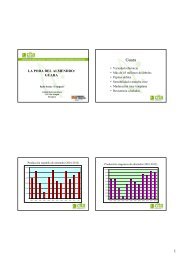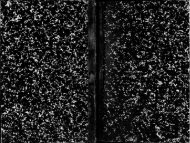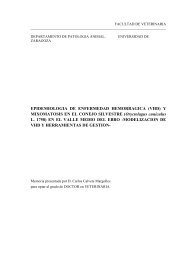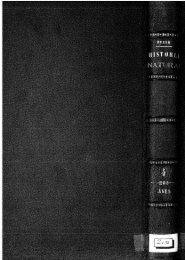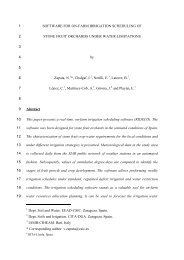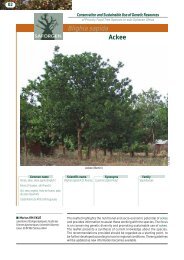1 A Recursive Dynamic Computable General Equilibrium Model For ...
1 A Recursive Dynamic Computable General Equilibrium Model For ...
1 A Recursive Dynamic Computable General Equilibrium Model For ...
You also want an ePaper? Increase the reach of your titles
YUMPU automatically turns print PDFs into web optimized ePapers that Google loves.
Price<br />
Pm<br />
Pfob<br />
Expenditure<br />
E1<br />
E0<br />
Q min Q f Q 0 Exports<br />
Figure 12: UR Export Constraints for EU countries:<br />
A Partial <strong>Equilibrium</strong> Analysis<br />
In the ORANI-DYN model, the export subsidy rate (expt4) for non-EU exports is<br />
endogenised to pair off with the COMPLEMENTARITY equation and ensure closure.<br />
Note that the per unit subsidy is the difference between the ‘basic’ (i.e., domestic presubsidy)<br />
non-EU export price (pe) and the non-EU export f.o.b. world price (p4). In the<br />
model, the domestic commodity price (which is the internal market price), p0com, is a<br />
weighted average of the domestic sales price (p0dom) and the composite basic export price<br />
(pe_c).<br />
There are two components to intervention prices: The first is to model the stock<br />
purchase trigger; the second is to model the reduction in effective protection to EU<br />
producers from the price reduction. On the first modelling issue, stock purchases are<br />
captured employing a separate COMPLEMENTARITY expression:<br />
31<br />
XS<br />
XD<br />
Exports<br />
XE



